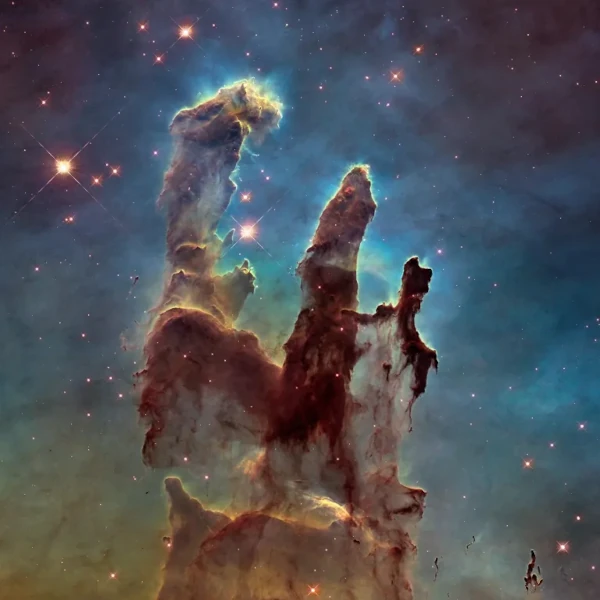
The Eagle Nebula (Messier 16, or M16) is an H II region located in the constellation Serpens, about 7,000 light-years from Earth. This nebula is famous for its Pillars of Creation, giant columns of gas and dust where new stars are born. Observations in visible and infrared light have revealed the complex structure of these pillars, which are sculpted by stellar winds and ultraviolet radiation from nearby massive stars.

The pillars are several light-years long and are composed mainly of molecular gas and dust. The combined action of gravity and radiative pressures causes the fragmentation of clouds and the formation of dense clumps at their tips. Hydrodynamic models suggest that ionized fronts move at speeds of the order of 10 to 20 km/s, gradually eroding the columns.
Within M16, protostars form in the dense regions of the pillars. Intense UV radiation ionizes the surrounding gas, creating dense globules called EGGs that can eventually become full-fledged stars. Spectroscopic analysis reveals the presence of molecules such as CO, H2, and ions of sulfur and oxygen, essential for the chemistry of star-forming regions.
Here is a table comparing some physical characteristics of the Eagle Nebula and other famous H II regions:
| Region | Size (light-years) | Temperature (K) | Average Density (cm-3) | Comments |
|---|---|---|---|---|
| Eagle Nebula (M16) | ~70 × 55 | 8,000 | 500 to 2,000 | Pillars of Creation, EGGs, formation of open clusters |
| Orion Nebula (M42) | ~24 | 10,000 | 1,000 to 5,000 | Close, massive star formation, easy observation |
| Lagoon Nebula (M8) | ~110 | 8,500 | 300 to 1,500 | Complex of young stars, ionized gas |